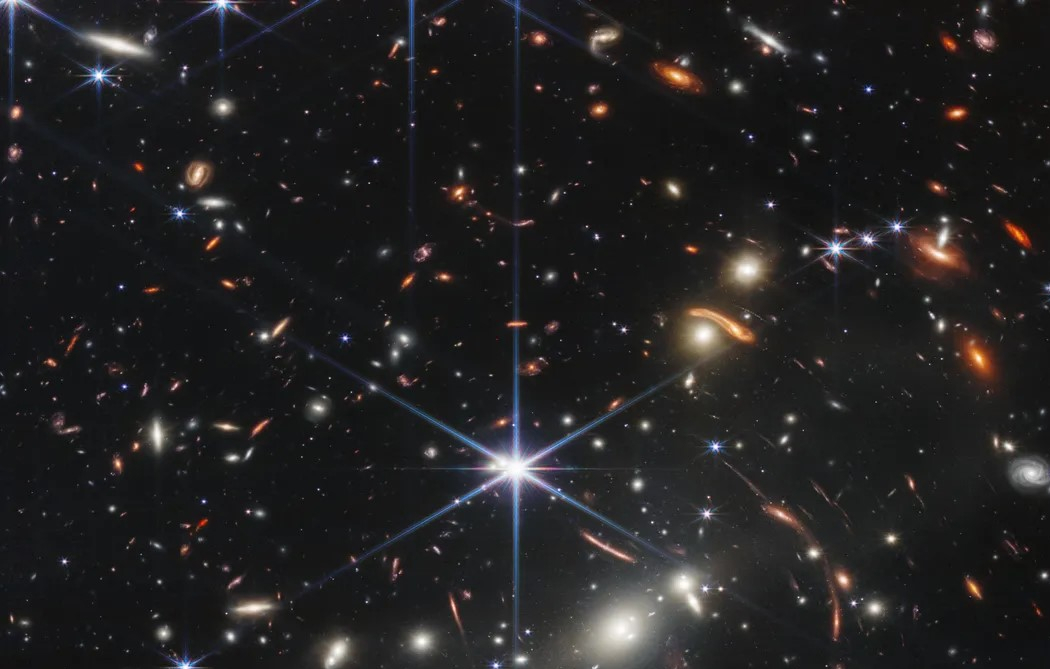Questions Remain Despite Discovery of Surprising Ultramassive Galaxies

On February 13, 2024
This piece underwent a rigorous review according to the standards and policies of Science X's editorial board. The confirmation of the article's credibility involved the following:
- Fact-checking
- Review by peers
- Confidence in the source
- Proofreading
This was conducted by Emily Howard, a scholar from the University of Texas at Austin.
Since the James Webb Space Telescope (JWST) began providing us with images of the early universe, astronomers have been puzzled by the apparent abundance of 'ultramassive' galaxies. This goes against the widely accepted cosmological model, which states that these galaxies should not have emerged until much later in the universe's timeline, raising questions about the need to alter the existing model.
Such alterations could considerably affect established scientific theories.
Julian Muñoz, an assistant professor of astronomy at The University of Texas at Austin, explained, 'The growth of objects in the universe is hierarchical, starting small and growing.' Muñoz recently co-authored a study, published in Physical Review Letters, which argues that altering the standard cosmological model is not required, however, the understanding of the formation and evolution of the earliest galaxies might need to be reevaluated.
Cosmology, the study of the universe's origin, evolution, and current structure, widely accepts a model called the Lambda Cold Dark Matter model (ΛCDM) or 'standard cosmological model.' Although the model is mostly reliable, due to the limited observability, our understanding of the early universe remains theoretical.
The Hubble Space Telescope, launched in 1990, has played a crucial role in developing the standard cosmological model. Its ability to observe in ultraviolet, visible, and certain near-infrared light wavelengths has allowed it to view smaller, dust-free galaxies, which often house larger populations of young, ultraviolet-emitting stars.
Meanwhile, the JWST, launched in late 2021, compliments Hubble's capabilities by observing near- and mid-infrared wavelengths, enabling it to detect objects that Hubble cannot.
Muñoz views this as a leap into the unknown, adding, 'We are now able to scrutinize our theories about the universe in ways we previously couldn't.'
In the period just after the Big Bang, the universe's density did not distribute evenly. This led to regions with greater densities attracting more matter due to gravitational forces, creating larger and larger cosmic structures.
The ultramassive galaxies observed by the JWST should not have been possible unless higher-density regions emerged shortly after the Big Bang, suggesting changes to the standard cosmological model.
Muñoz and his team tested this proposition. Within a period common to both Hubble and JWST observations, they checked the most massive galaxies in the JWST data and measured how much the early universe's density would have to change for these galaxies to form.
Next, they estimated how many additional smaller galaxies would appear due to this inferred change in early universe density, which should be visible to Hubble.
Muñoz clarified, 'But that's not what we see. You cannot amend cosmology enough to account for this abundance problem, given that it would also impact Hubble's observations.'
One theory as to why JWST is detecting many ultramassive galaxies is the presence of supermassive black holes within them, which heat up nearby gas and make the galaxies appear brighter and thus larger than they truly are. Alternatively, these galaxies might not be in the early universe at all but might appear to be due to dust making them look redder (i.e., farther away).
In addition to Muñoz, the study included authors Nashwan Sabti and Marc Kamionkowski from Johns Hopkins University.
The source of the journal information: Physical Review Letters , arXiv
Provided by University of Texas at Austin




